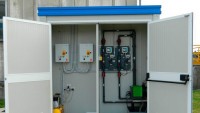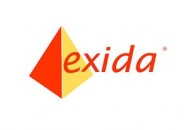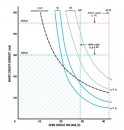SAN RAMON, Calif., January 16, 2011 – Chevron Corporation (NYSE: CVX) reports that its subsidiary, Chevron Nigeria Limited, is working to contain a fire that ignited early this morning aboard the K.S. Endeavor, a drilling rig offshore Nigeria operated by FODE Drilling Nigeria Limited. The rig was drilling a natural gas exploration well, located in the Funiwa Field approximately six miles (10 kilometers) offshore and in approximately 40 feet (12 meters) of water.
One hundred and fifty-four personnel were on the rig and an associated barge. Two contractors are still unaccounted for while all others are safe and undergoing medical examinations at an adjacent production platform. Aggressive search and rescue activities continue for the two missing personnel.
"Every effort is being made to find the missing workers. They are our utmost priority," said Andrew Fawthrop, managing director, Chevron's Nigeria/Mid-Africa Strategic Business Unit. "We do not know what caused the incident. We are working diligently to contain the fire, which is restricted to the rig. Substantial resources have been deployed including well control specialists and drilling experts. We continue to work in full cooperation with Nigerian authorities and are committed to providing additional information as it becomes known."
Nike Sportswear
 The implementation of an automatic dosing of the flocculants allows the customer to respect (24h a day, 365 days a year) the limit for phosphate in the outlet and save a lot of money: resulting in less chemicals and sludge production.
The implementation of an automatic dosing of the flocculants allows the customer to respect (24h a day, 365 days a year) the limit for phosphate in the outlet and save a lot of money: resulting in less chemicals and sludge production. exida has released a new white paper entitled: Comparing FMEDA Predicted Failure Rates to OREDA - Estimated Failure Rates for Sensor and Valve Assemblies.
exida has released a new white paper entitled: Comparing FMEDA Predicted Failure Rates to OREDA - Estimated Failure Rates for Sensor and Valve Assemblies. Intrinsic Safety is the natural choice for all low voltage instrumentation problems. This application note looks at the design, installation, maintenance and repair of Intrinsically Safe equipment and also considers the risks associated with dust.
Intrinsic Safety is the natural choice for all low voltage instrumentation problems. This application note looks at the design, installation, maintenance and repair of Intrinsically Safe equipment and also considers the risks associated with dust.